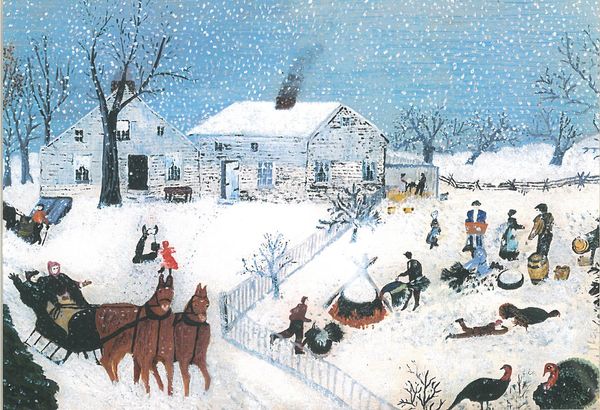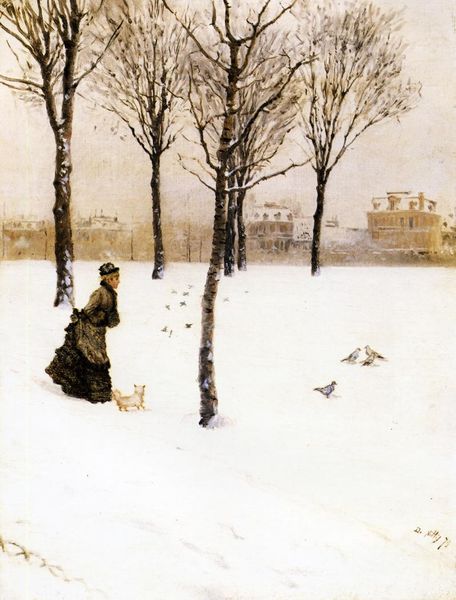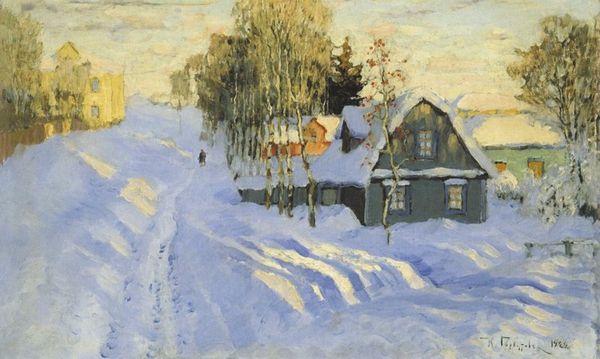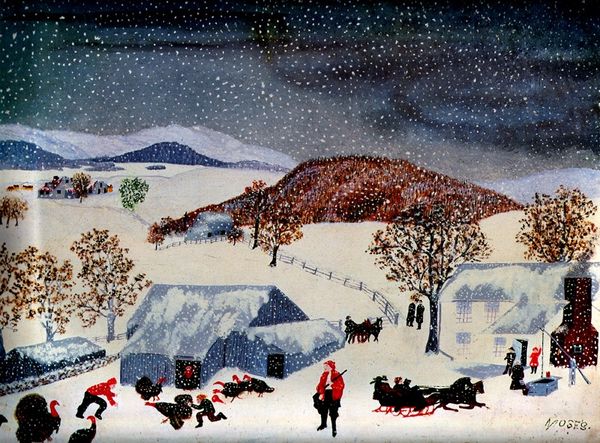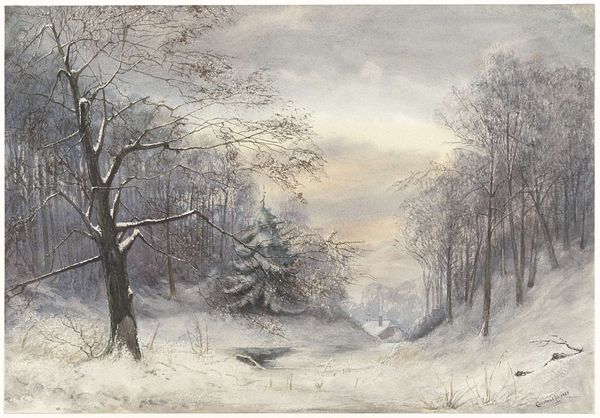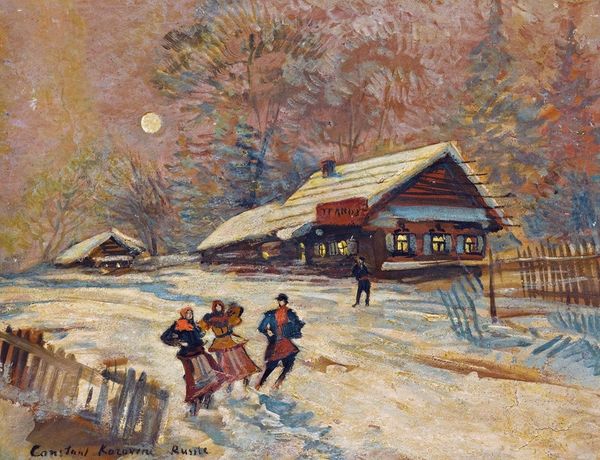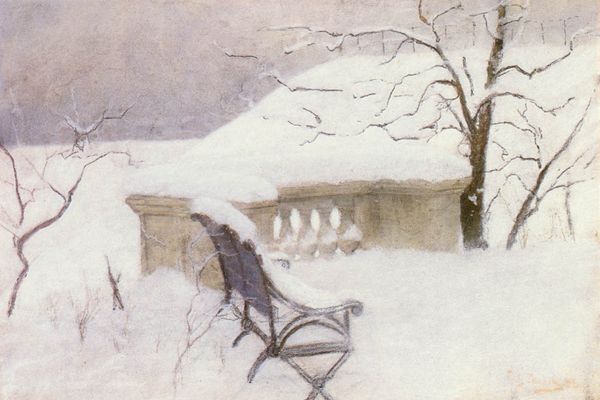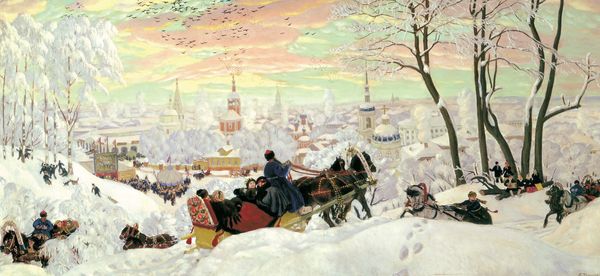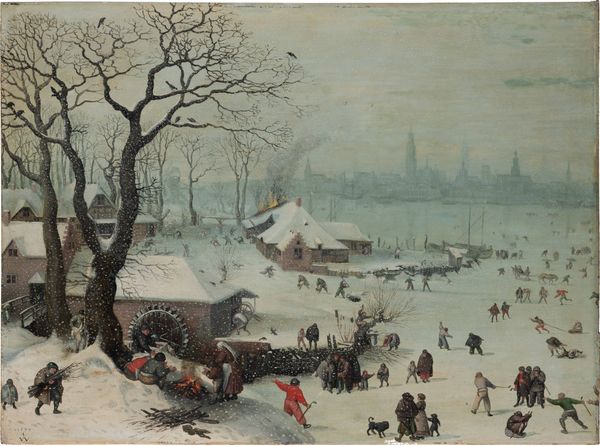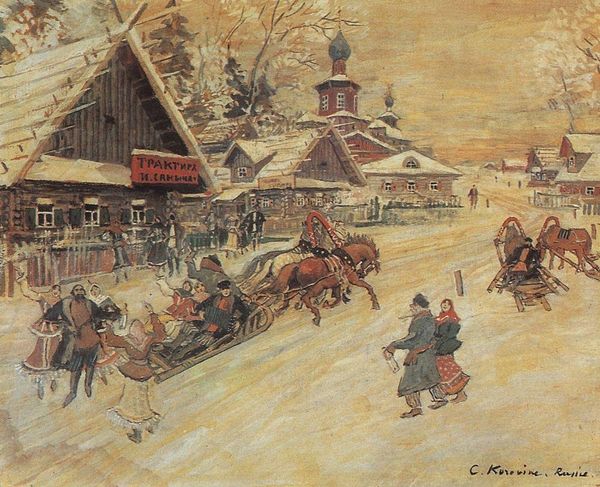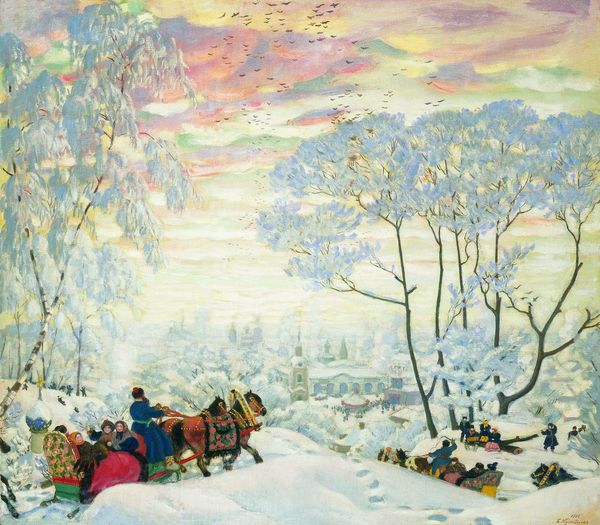
Dimensions: 43 x 32 cm
Copyright: Public domain
Editor: "The Yard and Wash-House" by Carl Larsson, created in 1895. This watercolor gives me a cozy feeling despite the cold winter scene, perhaps because it's so domestic. I'm really struck by the soft light and how it almost romanticizes the everyday chores depicted. What historical or social contexts might be informing Larsson's choice of subject? Curator: That’s a wonderful observation. Consider the late 19th century’s burgeoning interest in the home as a symbol of national identity. Larsson, part of the Arts and Crafts movement, idealizes domesticity, but we also see a focus on Swedish folk culture and pre-industrial life in his work. The wash-house itself represents labor, a crucial part of the social fabric, and presenting this labour through this atmospheric painting serves a societal and political purpose. It elevates this place into more than a wash-house. Doesn’t it evoke sentiments beyond the pure depiction of daily life? Editor: Absolutely, I can see how it speaks to a desire for a simpler, more authentic existence. It almost seems staged in a way, highlighting certain cultural values like hard work and the innocence of childhood, with the kid on a sled and the chore being completed in the background. But how much of this idealization was truly reflective of the reality of everyday life for most Swedes? Curator: That's the critical question, isn’t it? Larsson’s paintings are beautiful, and popular even now, but they selectively depict a sanitised version of reality. Remember, this was also a time of social upheaval, industrialization and urbanization. By presenting these idyllic scenes, Larsson could be seen as reinforcing certain class-based ideals, obscuring the realities faced by many working-class families. Are you now seeing new connections regarding its political use? Editor: Yes, I am! So, while the image is aesthetically pleasing and heartwarming, its creation and reception are tied to the social and political landscape of the time, showcasing not necessarily an accurate reflection but a projected aspiration. Thank you, that was really insightful. Curator: Precisely. Art's power lies in both what it shows and what it subtly omits. Reflecting on these layers offers invaluable understanding, enriching our interpretations.
Comments
No comments
Be the first to comment and join the conversation on the ultimate creative platform.
